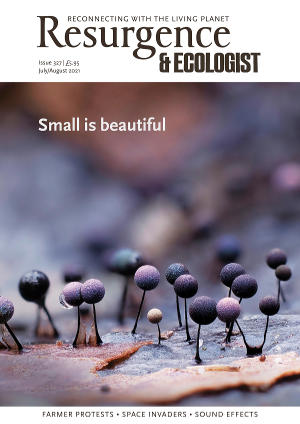As a child, Suzanne Simard loved soil so much that she ate it; her mother was regularly worming her. She was raised in the Canadian Northwest, in the shadow of Simard Mountain, named after her Québécois great-grandparents, who had pioneered the land. She is from a long line of loggers, and she had watched as the selective cutting of her grandparents’ generation morphed into the vast clear-cuts of today. In her twenties she took a job with the forestry service, and it was early in her career, checking on a plantation recently seeded with spruce, that she found every seedling to be yellowed and withering. The prevailing wisdom was to uproot or poison anything that was not the intended crop, removing all competition so that the spruce could thrive. But these trees were dying. It did not make sense. And so began Simard’s 40-year hunt to prove a hunch: that forests yearned to cooperate, not compete.
Experiments in forestry take time; they conclude long beyond the lifespan of the researcher. But gradually Simard uncovered the secrets of the forest. She found that individual trees, of both the same and different species, are bound together in the soil by mycelia of fungi. And through these networks, those trees assist each other. Old trees with deep roots bring up water for the seedlings. In the summer spruce pass their excess carbon to the birch, and in the spring and the autumn the birch return the favour. Trees infested with parasites will warn their neighbours to prepare their defences. And as the old trees of the forest, the Mother Trees, die, they hand down their nutrients not only to their kin, but also to trees and species unrelated to them.
“Trees and plants have agency,” writes Simard. “They perceive, relate and communicate; they exercise various behaviours. They cooperate, make decisions, learn and remember.” She was a woman in a men’s world, and someone searching for holistic understanding in a discipline that fetishises reductionism, and it took many years for science to accept her findings. Yet slowly, surely, they have taken hold, and their ramifications are immense.
When Nature first published her findings in 1997, it coined the phrase ‘Wood Wide Web’. The term has stuck, but this, too, feels reductive, a metaphor of inanimate objects wired together. Simard describes the forests as not unlike our own neural networks, a multiplicity of pathways, synapses firing, chemicals identical to our own neurotransmitters, a creation of something not unlike intelligence.
Every so often a scientific idea comes along that has the power to upend the prism through which we see the world. Nature is the stories that we tell about ourselves. For too long we have believed that everything must be in competition, that the planet has found a dynamic stasis only through each species’ perpetual fight. But such a ruthless Darwinism is only the first part of the story. Ecosystems co-operate. We have been deaf to Nature’s complexity and to its intelligence. We are the competitive species, and it has pushed our ecosystems to the brink.
As Simard acknowledges, it has taken her a lifetime of crunching data and academic wrangling to prove the hunch she had as a young woman, and to prove the stories that the Indigenous people of this land have passed down for millennia. As the book draws to a close, Simard’s 18-year-old niece turns to her and asks in desperation: “Why it has taken so long for everyone to understand this?”
Can we listen, before it’s too late?







